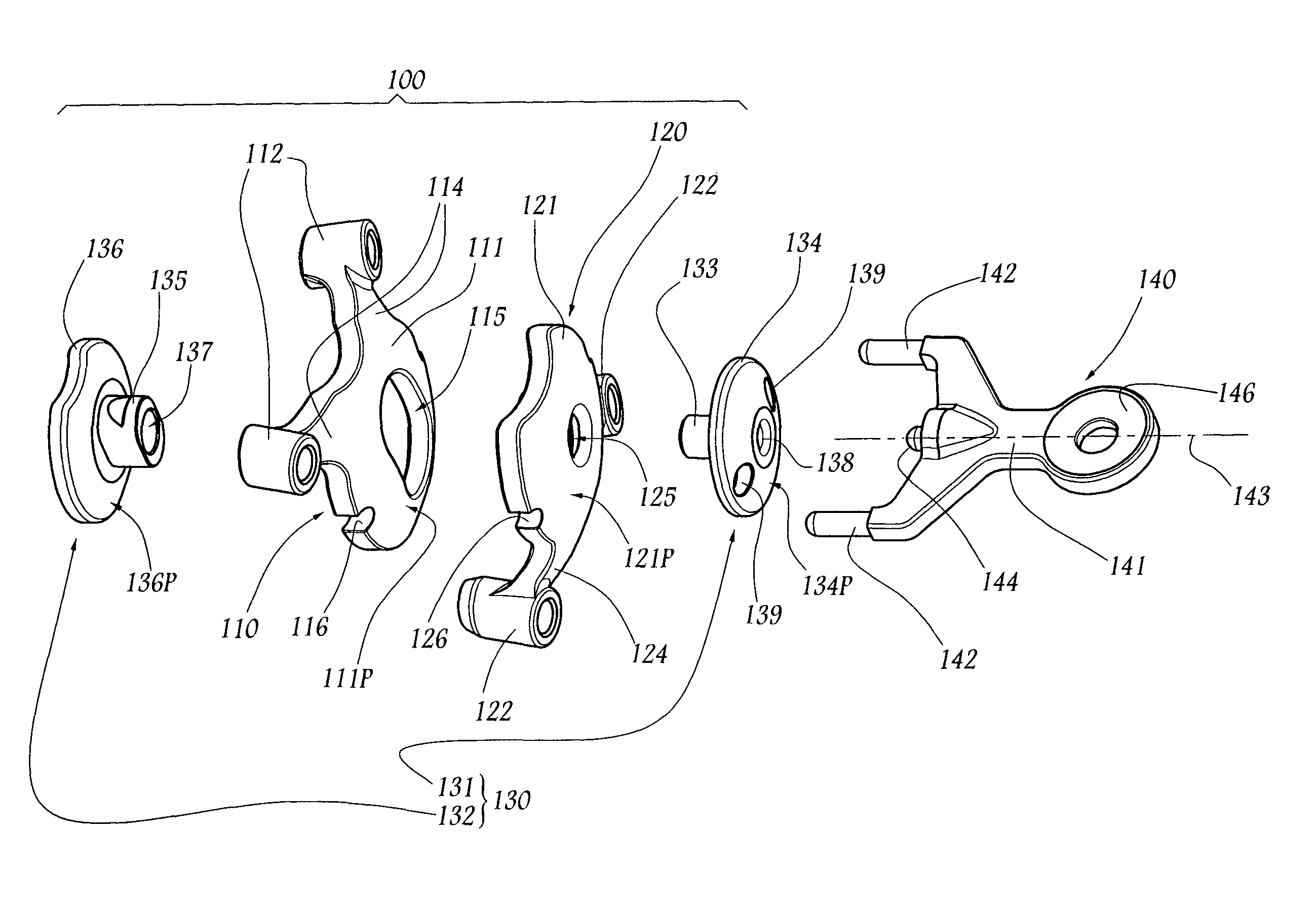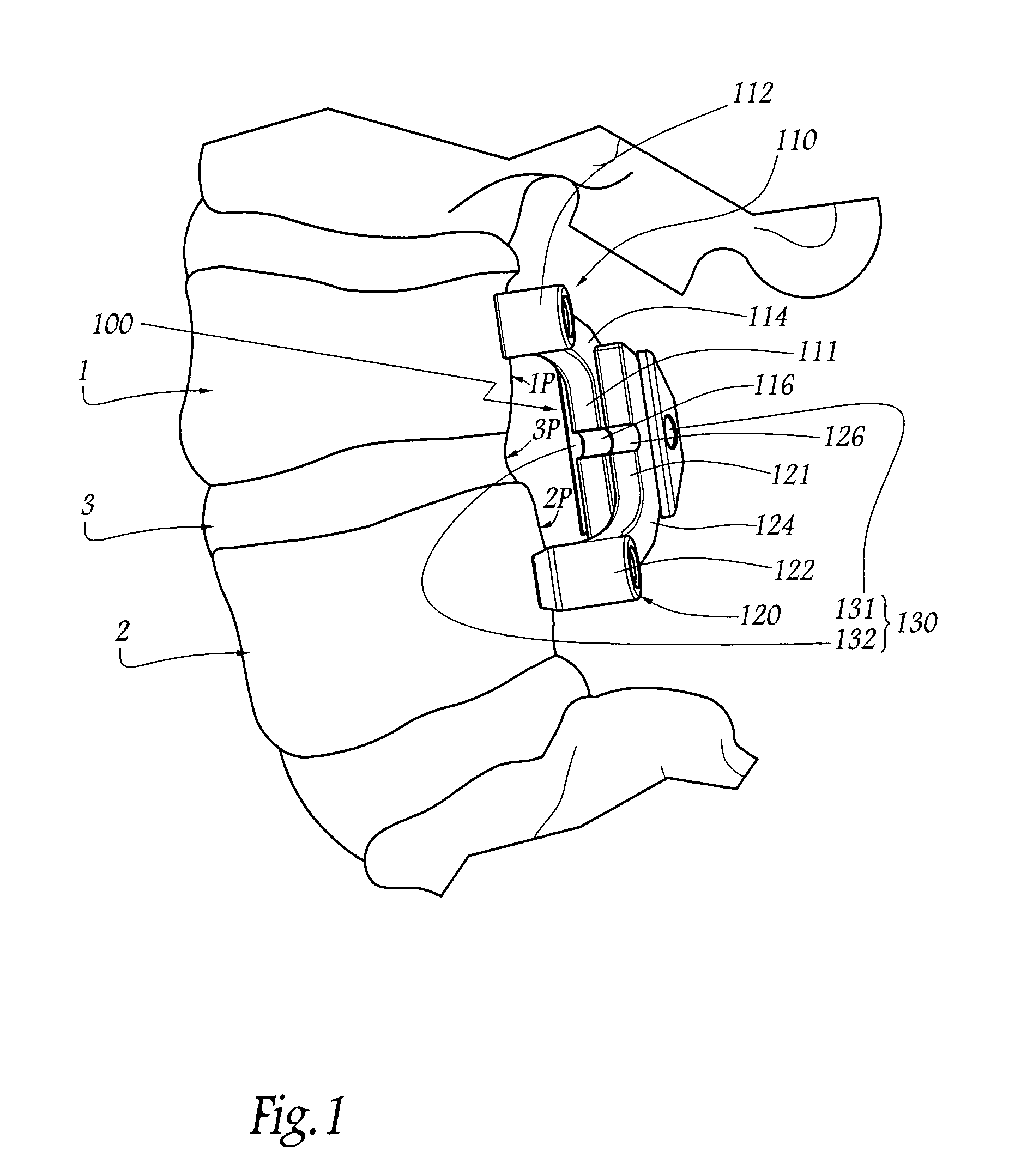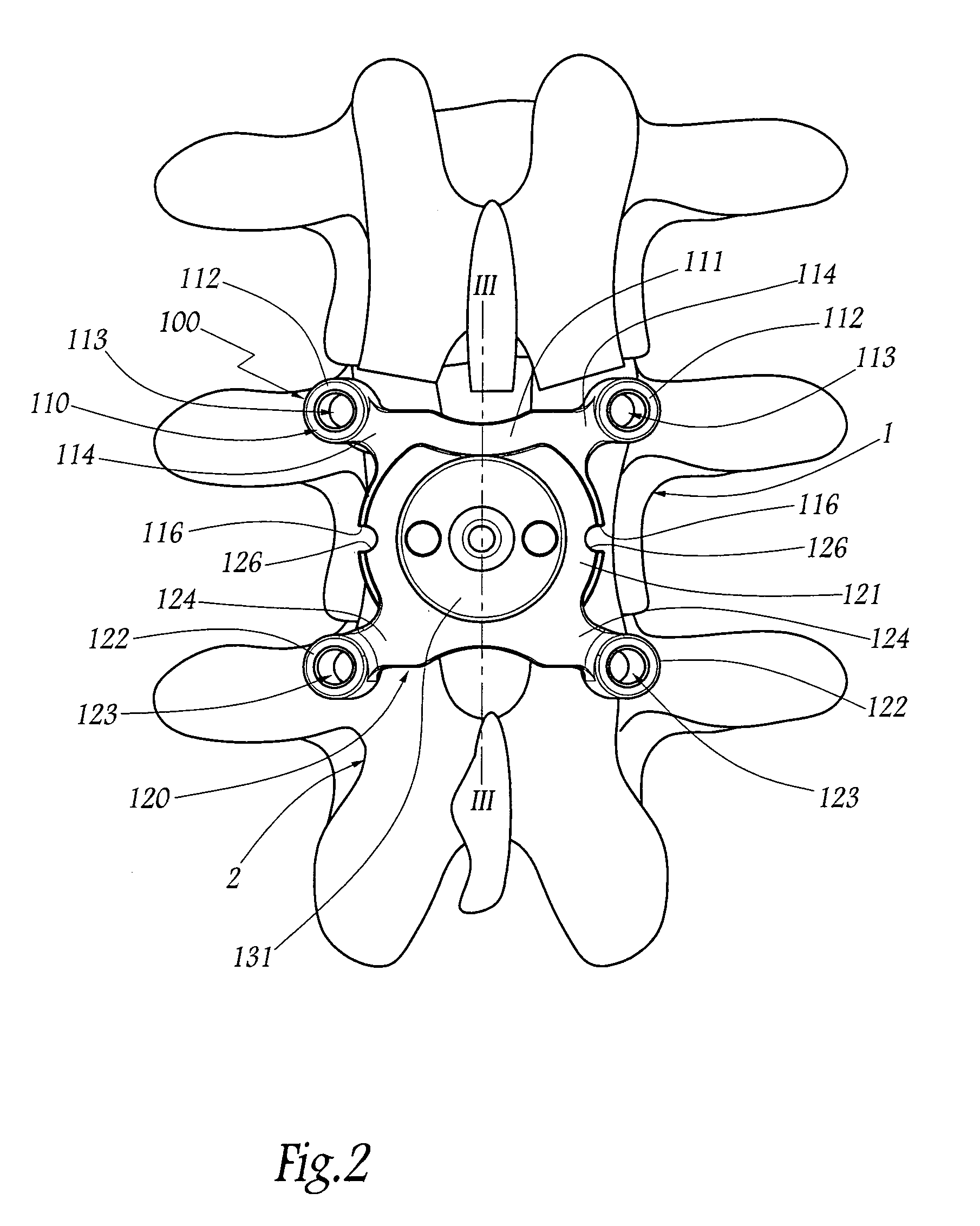Device and unit for the posterior dynamic guidance of the spine and treatment system comprising such a device
- Summary
- Abstract
- Description
- Claims
- Application Information
AI Technical Summary
Benefits of technology
Problems solved by technology
Method used
Image
Examples
Embodiment Construction
[0041]FIGS. 1 to 3 depict two adjacent vertebrae 1 and 2 of the lumbar spine of a human patient. These vertebrae are separated from one another by an intervertebral disk 3. For convenience, the remainder of the description is oriented with respect to these vertebrae in their anatomical position, that is to say that the terms “posterior” or “rear”, “anterior” or “front”, “right”, “left”, “superior”, “inferior”, etc. relate to the spine of the patient standing up.
[0042]FIGS. 1 to 5 depict a device 100 for guiding the vertebrae 1 and 2, which is implanted on the posterior side of the vertebrae and is capable of providing a posterior articulated mechanical joint between these vertebrae, while at the same time maintaining the intervertebral space that vertically separates these vertebrae and which is occupied by the disk 3. The device 100 comprises a superior vertebral unit 110 implanted on the vertebra 1 and an inferior vertebral unit 120 implanted on the vertebra 2.
[0043]Each vertebral...
PUM
 Login to View More
Login to View More Abstract
Description
Claims
Application Information
 Login to View More
Login to View More - R&D Engineer
- R&D Manager
- IP Professional
- Industry Leading Data Capabilities
- Powerful AI technology
- Patent DNA Extraction
Browse by: Latest US Patents, China's latest patents, Technical Efficacy Thesaurus, Application Domain, Technology Topic, Popular Technical Reports.
© 2024 PatSnap. All rights reserved.Legal|Privacy policy|Modern Slavery Act Transparency Statement|Sitemap|About US| Contact US: help@patsnap.com










